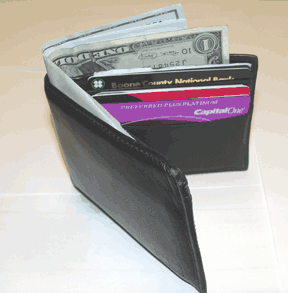Entries from December 2008 ↓
December 12th, 2008 — copywriting services, copywriting tips, freelance copywriting

The Holy Grail of business is the effectiveness of your marketing strategy.
If you have a shop on the high street, you would use your shop window displays to draw the public in. Once they step inside your shop, your highly trained army of sales staff are there to convert their initial interest into sales.
This is also true for online businesses, albeit in a virtual way. Your website needs to draw visitors to browse before they start to buy.
Of course, in the online world your shop window display is effective copywriting. There is one advantage of having a bricks and mortar shop; if sales begin to diminish you can resort to loitering in the shop doorway, leaping on unsuspecting passing trade, dragging them into your shop and forcing them to buy.
That is not to say that I am condoning such strategies but it is not something that is available to the online trader. Copywriters, no matter what their calibre, are unable to drag in clients or herd them through your website using a cattle prod. But their copy will increase the flow of traffic to your site and encourage them to browse and ultimately buy by being persuasive.
Persuasive copywriting is a skill that requires the use for four techniques.
- Evoking an emotional response – emotion is the most powerful tool available to the copywriter as it is the most important factor in the decision making process.
- Persuasion – the hard well will have your customer running for the door. The key is to persuade them to make the decision you want them to make.
- Be familiar with the website – your copywriter will then be able to impart a confident tone in their writing.
- Understanding the products – the copywriter must understand the product thoroughly so they can convey specific instructions and descriptions.
Copywriting is therefore all about attracting and then persuading your customer to buy. Persuasive copywriting is effective copywriting and therefore will be the hallmark of a professional.
December 10th, 2008 — copywriting services, copywriting tips, freelance copywriting

How on earth can a copywriter know how to make someone buy?
It’s not as if we were all fitted at birth with a little button that can be pressed to make us open our wallets. Which is rather a shame because then my job as a freelance copywriter would be so much easier.
Let me start by telling you something that most definitely won’t make people buy – clever marketing. It doesn’t matter how pretty your ad looks, how witty your slogan or ironic the content, none of that will make your reader think ‘I must buy that’.
What will get them to open their wallets is when the marketing strikes a chord with them. It is exactly this that a copywriter must aim for; they must tap into their emotional reasoning.
Customers are canny creatures and they won’t buy just because you are trying to sell to them but they will buy if you can make them realise it would be of benefit to them to own what you are offering.
- It could give them the solutions to their problems
- Make them more attractive to the opposite sex
- Guarantee increased income
Just be careful about what you promise because you have to fulfil their expectations.
The key is to understand your audience, to get inside their heads and discover exactly what makes them tick. It’s not an easy thing to do and takes much practice but once you have mastered it you will be producing copy that will build customer confidence in your products and will make them want to buy.
Sounds simple, doesn’t it?
December 8th, 2008 — copywriting services, copywriting tips, freelance copywriting
The ambition of every freelance copywriter is to write the greatest sales letter ever  written. But when you are sat in front of your laptop carefully crafting your letter, how do you make sure that your message hits the back of the net?
written. But when you are sat in front of your laptop carefully crafting your letter, how do you make sure that your message hits the back of the net?
Well, as already mentioned in my earlier posting The Copywriter Scores, the best place to start is the identification of your goals and objectives. Think about what exactly it is that you want your reader to do; what should their reaction be when they read this letter?
Basically you are looking to identify:
What you want your reader to know
Make sure your writing is benefit-led and not feature-led although you will need to tell your reader some facts about what you are selling so that they can then justify their buying decision.
How you want them to feel
This is their emotional response – you want them to feel worried that they’ll be missing out if they pass up this opportunity. The emotional response is not an easy little blighter to pin down at the best of times but if you can tap into your readers’ emotional tank you will be on to a winner.
What you want them to commit to
This is the call to action. It could be ‘buy now’, ‘recommend a friend’ or perhaps ‘book an appointment with an advisor’. Whatever it is it must be specific and direct. You must leave them in no doubt whatsoever about what they should do, how they should do it and when.
Follow those three golden rules and hit the back of the net every time.
Sally Ormond
December 5th, 2008 — copywriting services, copywriting tips, freelance copywriting

Each new project brings with it many challenges. But one of the most crucial aspects you will ever face as a freelance copywriter is the defining and setting out of your goals.
The starting point for any new piece of work is to ask yourself what the purpose of the document you are about to write is. If you are writing a sales letter it is important to remember that what you are about to create will replace a personal visit or conversation with the reader. Therefore it must achieve what a salesman would achieve face to face.
Your goal would be any number of things including:
- Making a sale
- Getting opt-ins for your email list
- Getting someone to open an account with you
- Increase a customer’s spending with you
- Renewing a contract
- Agreeing to a meeting
Whatever it is you must ensure that it is the goal that drives your writing and not your creativity.
Writers are creative by nature so it can be all too easy to let your alter ego get the better of you. How do you know if you’ve gone over the top? If , when you read it, it makes you smile; you want to show it to everyone with a big grin on your face shouting from the roof tops ‘look how clever I am’, ditch it.
Take a look at it and ask yourself if it will persuade the reader to buy. If your answer is ‘no’, scrap it. You are not in the running for the ‘Most creative sales letter’ Oscar, you are trying to achieve the goal you have been given by your client.
December 4th, 2008 — copywriting services, copywriting tips, freelance copywriting
As a copywriter I like my work to inspire, entertain and inform my readers so they can make the right  buying decision for them – that obviously being the particular product or service that I happen to be writing about.
buying decision for them – that obviously being the particular product or service that I happen to be writing about.
However, as in the slightly distorted words of Jane Austin, ‘It is a truth universally acknowledged, that a reader in possession of a sales letter, will be in close proximity of a rubbish bin’
Why? Because people don’t like them. They see them as an intrusion and believe that their only benefit is that they can be recycled and made into something more useful.
It doesn’t matter how long you spend writing that letter, if it is unsolicited it is unlikely to be read. Therefore you need to find yourself a brilliant freelance copywriter who can grab your reader’s attention by writing the best sales letter known to man.
The quality of your letter begins even before you have opened a new blank document. Let me ask you a question; before you write do you sit down and work out a plan? You would be surprised at the number of people who don’t. Think back to your school days, I bet your teacher always told you to plan your essays and when you finally took that advice your grades began to rise. So why not do the same for your sales writing? Let’s face it writing without a plan is rather like wading through treacle.
Remember, whatever you write must evolve around your reader. Think about:
- Who am I writing to? – this is your ideal reader, you know, the image that is now in your head
- What do I want to say? – focus on your reader’s needs not yours
- How much space do I have? – know your word count before you start
- How do I want to come across? – friendly, approachable, authoritative, unbiased…
- What’s my deadline? – always important to know
- What do I want to achieve?
The last one is the holy grail of your letter. Is your letter designed to make your reader change their mind about something? Do you want to motivate them into an action? Do you want them to buy something?
Your plan is taking shape. You know who they are, you know what you want them to do, now you can tell them why your product/service is right for them and what it will do for them (the benefits) and you know how to tell them what to do next (call to action).
If you are time-limited it is tempting to skip the planning stage and dive in – be warned, you will do so at your peril and your letter will be turned into a paper cup. Of course there is one way that you can save yourself the time it takes to plan and execute a brilliant sales letter – hire a copywriter!
Sally Ormond










